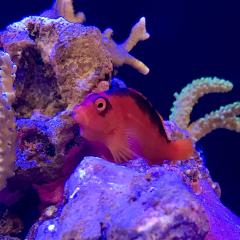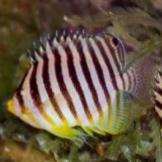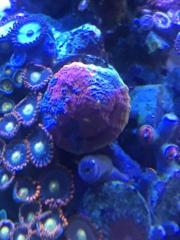Leaderboard
Popular Content
Showing content with the highest reputation on 04/19/2018 in all areas
-
A short write up on common issues reefers face when mixing salt water. This article aims to covers a couple of areas: Consistency issues with large buckets of salt mix (top vs bottom) How optical refractometers work. Selecting the right refractometer. Calibration method Other processes that may adversely affect the water parameters (eg. Prepare salt for specific gravity of ~ 1.025. But when you measure the Ca, Mg, KH parameters, it’s NOT as per published numbers) Hands on with branded vs ‘cheap’ refractometers. And cross check with a calibration fluid. This article focuses on the handheld optical refractometers. Some are mine. Some are borrowed. Examples of why inaccurate salinity measurement is detrimental Prolonged incorrect salinity parameters will negatively impact coral growth or reproduction rates Ineffective hypo salinity treatment for breaking ich parasite cycle or quarantine. Incorrect target Ca, Mg, KH parameters. More effort needed to compensate with dosing methods Mixing salt Some salt brands mention to remix the bucket of salt but some don’t. The reality is that for any brand or type (evaporative or synthetic salts), smaller/heavier elements like magnesium will sink to the bottom of the bucket due to vibration during transportation. You end up with more calcium salt at the top & more magnesium salt at the bottom. This means that the water parameters of a new bucket of salt can be fairly ‘different’ from that from the bottom of the bucket. While some feel this difference does not matter, some others are very particular on chasing water parameter numbers but ignore step. One best practice for ensuring consistency is to remix the dry salt – Split the salt to different buckets then recombine back for storage. Just a 10 minute task. Mix it manually or roll the partially filled bucket to mix. Then recombine all the salt back into the original bucket for storage. Salinity & its relationship with specific gravity. Salinity The important unit of measure for seawater is “Salinity”. This is a measure of the weight of salts dissolved in 1000 weight of water (eg. 35g of salt in 1000g of water) The salinity of most seawater ranges between 34PPT-36PPT (parts per thousand) depending on the location. Hence the widely accepted practice of targeting the average of 35PPT It is this total amount of salts that give you the final water parameters. Putting more salt (eg. 36ppt) will naturally give you higher Ca, Mg, KH numbers compared to 35ppt. Specific Gravity (SG) This is a relative density measurement. That is, a ratio of density of a given substance to the density of water. Specific gravity is a good alternative and practical method of measuring salinity. Having said that, it is important to understand various aspects around specific gravity. A common mistake is that most reefers shoot for is a specific gravity of 1.025. However, this number does not necessarily get you 35ppt salinity. Factors such as ambient temperature and refractometer calibration accuracy affect the target specific gravity. Refractometer Many of us use hand held optical refractometers for practical purposes. It works on the fundamental physics principal of light refraction (bending light across a surface), and comparing the relative difference between the refraction of pure water vs salt water. Liquids with higher salinity has a higher refractive index & will bend light more. This shows up as the location of ‘blue line’ on the specific gravity scale. Some facts: Most refractometers from LFS or ebay in the US$30 range are designed for “brine”. Brine is a generic term for salt water which is composed of mostly sodium chloride. One common use of brine is for preserving food in salt water. Note that Brine is NOT the same as sea water (Chloride, Sodium, Sulfate, Calcium, Magnesium, Potassium & other minor constituents). Hence the behavior under the refractometer is different. If using a brine refractometer, be aware it has a salinity offset compared to sea water at various temperatures. The generic refractometers have a salinity scale from 0-100ppt. For our purpose, we measure around the 35ppt region only. While some may get by with generic brine refractometers, many prefer paying slightly more for seawater specific ones for better accuracy. Key differences are build quality & materials used. For example, the DD refractometer body is made of copper – this ensures quicker water/tool temperature equalization and also more consistent ATC (auto temperature compensation) Cheaper refractometers have a plastic or aluminum body which makes the temperature equalization slower & less accurate. As mentioned earlier, specific gravity is a measure of density (i.e. mass / volume). As temperature increases, water volume increase as well. Hence for a particular salinity level (eg. 35ppt), specific gravity change at different temperatures. Temperature is one of the single most important factors influencing accurate refractometer readings and is one of the largest sources of error in measurement. Refractive index is VERY dependent on temperature. The common refractors used in the hobby have ATC (Automatic Temperature Compensation). The ATC mechanism is simply a bi-metallic strip : an assembly of 2 different metals which expand/contract at different rates. Causing it to bend up or down to change the position of the visual scale to ‘compensate’ changes in refractive index of the water being measured. For the Auto temperature compensation to work properly, you must allow the test sample & refractometer body temperature to equalize. Best practice is to place your sample then wait 10-20 seconds before taking a reading. ** Image from http://www.refractometer.pl/hand-held-refractometer Calibrating refractometer. Calibration is to reset the 0 PPT / 1.0 SG point to ensure the refractometer is accurate for the operating temperature range specified (eg. 10deg to 40deg C). Essentially, what calibration does is to move the viewfinder scale up/down by tuning a small screw. Most refractometers have a label stating “20/20”. This means it’s designed & was originally factory calibrated at 20degC. The behavior of the bimetal strip ATC & optics is tuned to this set point. To do this properly in our warm climate, you need to cool the refractometer body to 20degC (eg. in a 20degC air con room) With the refractometer at 20DegC, place RODI water on the prism. Wait 20s. Then tune the screw till it reads 0 PPT / 1.0 SG A common mistake is to zero the refractometer at ambient condition that is not 20degC. Here you see a slight offset in reading RODI water. If you had done so, the salinity of the salt you are getting would be ~ 1.5ppt lower than your target. ** Pardon the unsharp refractometer reading pictures as they were taken with an iphone A common question is how the cheap refractometers compare with branded ones. As seen in the picture below, the unbranded brine refractometer reads approx. 1.5ppt higher than sea water specific ones. I personally prefer the rubber cap over the calibration screw port. Threaded ones are troublesome to remove & prone to water getting in. The DD one has a thoughtful design that minimizes chances of losing the cap compared the Brine or Red Sea one Target water parameters Only a few salt manufacturers publish the recommended salinity/SG/temperature mixture. Here is an example : https://www.theaquariumsolution.com/product/3035/124 Often, we use a water pump to help mix the salt in a drum/bucket of water. Care should be taken to prevent the mixture salts from precipitating. This means that an insoluble solid has emerged from the solution which can also alter the published water parameters. In most cases, mixing salt for 1-3 hours should be sufficient. Do not mix for excessively long periods. The heat from the water pump may cause calcium carbonate precipitate. Tell-tale sign is cloudy water if that happens. Avoid leaving the pump turned on overnight in an open container. This can draw CO2 from the air into the water & change the chemistry of carbonate towards bi-carbonate. This also leads to some precipitation Parting notes I hope this short write up highlights some areas to watch out for when preparing salt mix – selecting a good refractometer & proper calibration to ensure the right salinity/specific gravity is reached. And some best practices to obtain consistent water parameters every time new salt is mixed. Cheers1 point
-
1 point
-
1 point
-
1 point
-
I have a 3" feet mixed reef high Nutrient tank with 16 over fishes, tried many beginner SPS and left with 2pcs guess is the hardly type. Glad to hear this product and thanks for sharing.1 point
-
It's same as bio pellets(no reactor just air stone...cubes filled with carbonates that bacteria eats then skim out. Refill depends on your tank nutrient Sent from my LG-H860 using Tapatalk1 point
-
Get Nitra Guard Tatteium Bio Cubes....using bomb method no need reactor....u see it perform within a week Sent from my LG-H860 using Tapatalk1 point
-
1 point
-
1 point
-
Hey dude, umm actually I'm just like you, but there's dif. Story for me lately, my corals do so good for months without any requirements except for phytos, and within this month I've been losing so many, others are from bleaching and others is what I think is thinning of bone structure that's why it keeps shrinking and detatches to the skeleton, and I'm worried that I might lose another one again so I just used my common sense and figure out that milk contains calcium that can help any bone issue, so even if it's not proven, it's not that risk because milk is natural and whatever happens there it will be fine, cuz' if u worry nitrates then just water change, if too much potassium that can burn polyps then water change and the natural calcium that we intake is the same as corals' and the thing why we keep doubting maybe theirs are dif. Because yes they use the same calcium as ours but becomes a compound when intaken , so that's it dude, hope you keep updated with my experiment, tnx.1 point
-
Edit* added IDs Bundle of 6 Frags @ $60 (Xmen, random rainbow zoas, electric alien eyes, watermelons,Smoulderig cauldrons,ring of Fire), Loose Frags A1,2 - $20(Electric Alien Eyes), B - $15(Smouldering Cauldrons), C1,2 - $10(Ring of Fire).WhatsApp 92971884 if keen, collection at 579727. Thanks!1 point

.thumb.jpg.57c2e34da3fe90fcdb8e11c6a93f46a9.jpg)
.jpg.3c882c78220b37acb2f87a1c6291d9b5.jpg)
.jpg.984da0f5d63e41aa89689987ed0999c8.jpg)
.jpg.98b9d9a65fb7e59b6a9a795154b1b38a.jpg)
.jpg.5a467eef2a01ca0b74e091b7df542c58.jpg)
.jpg.dfc3b265d6649f28290638662ab003d6.jpg)
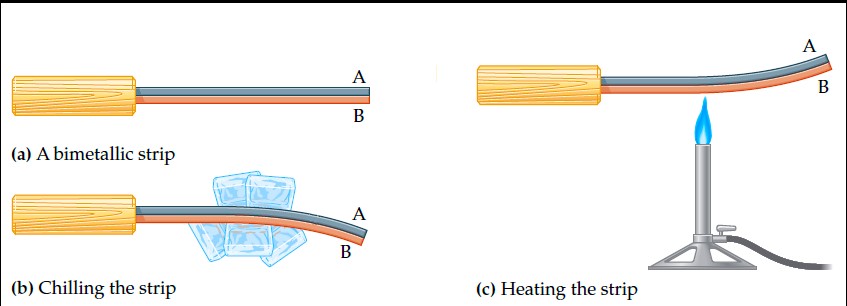
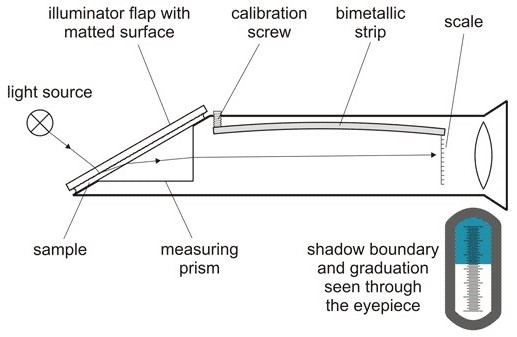
.jpg.fbb09796969843848201cf698f23efa6.jpg)
.jpg.88bfdbe8ba685ead1d0f1670de197144.jpg)
.jpg.fd320a38c2aef9e130524a195197f110.jpg)
